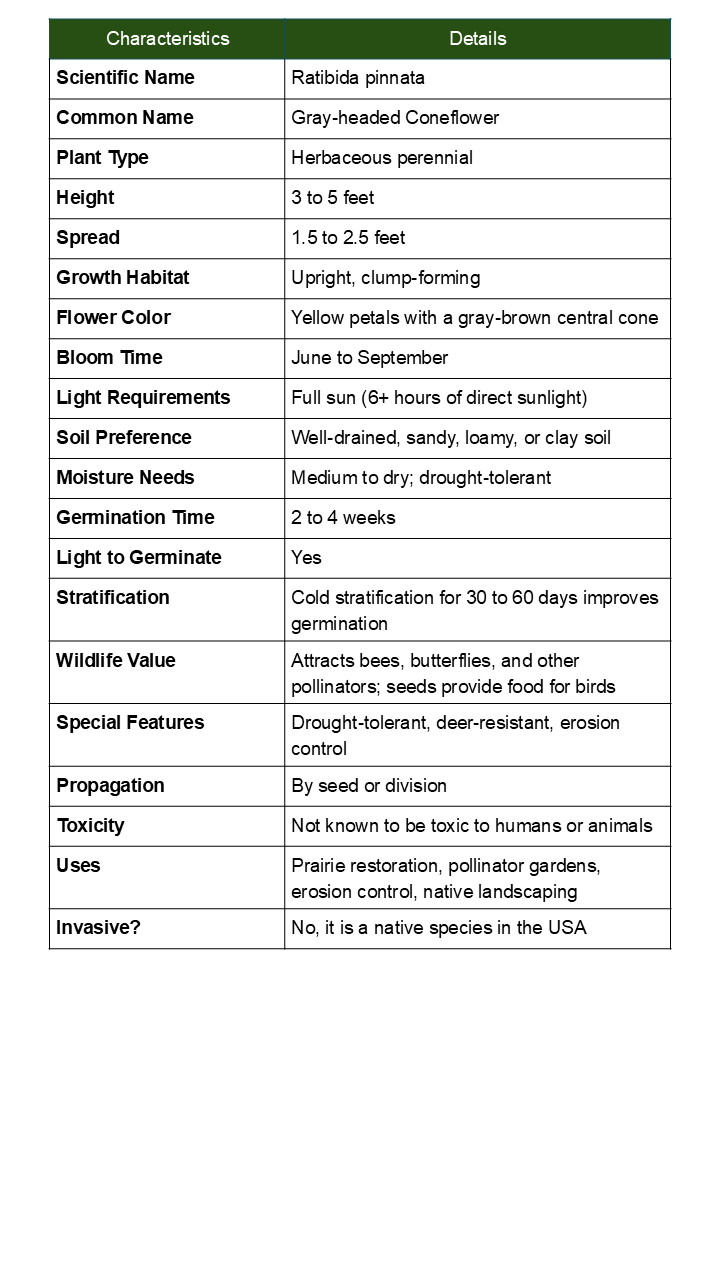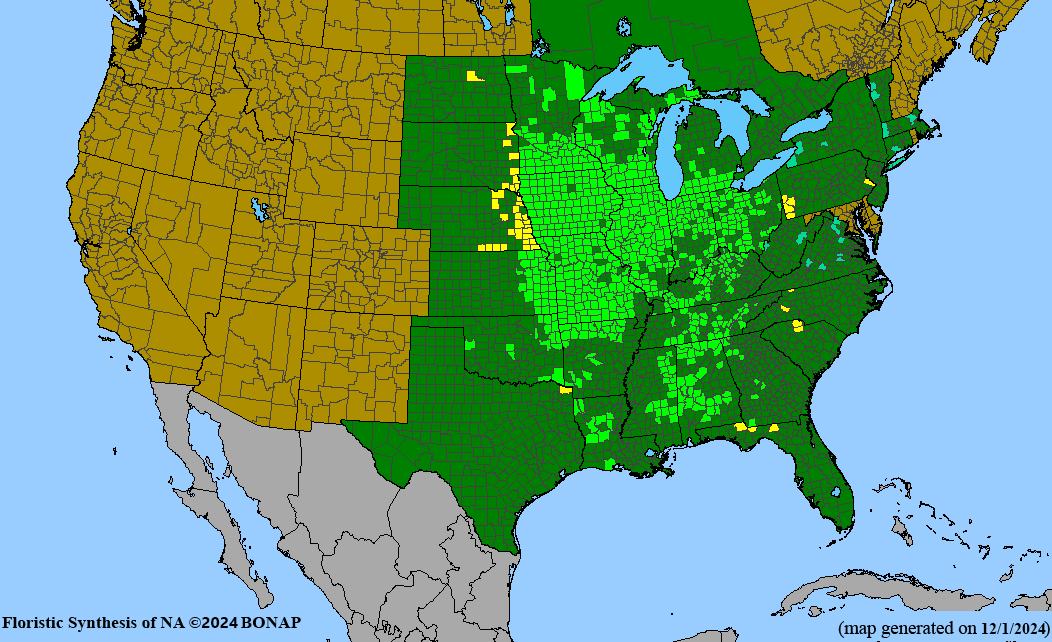Grey Headed Coneflower Seeds - Premium Ratibida pinnata for Prairie Wildflower Gardens
Regular price$4.00
/
Tax included.
1 review
Description
Towering Prairie Beauty - Grey Headed Coneflower
Grey Headed Coneflower (Ratibida pinnata), also known as Gray-head Prairie Coneflower, is a magnificent native perennial that brings dramatic height and unique texture to prairie gardens and naturalized landscapes. This striking wildflower features distinctive cone-shaped centers surrounded by drooping yellow petals, creating an architectural presence that commands attention.
🌻 Key Benefits:
- Impressive Height: Grows 3-5 feet tall, creating dramatic vertical interest
- Extended Bloom: Flowers from mid-summer through fall
- Pollinator Magnet: Attracts butterflies, bees, and beneficial insects
- Bird Food: Seeds provide winter food for goldfinches and other songbirds
- Drought Tolerant: Thrives with minimal water once established
- Low Maintenance: Self-seeding perennial that naturalizes beautifully
🌱 Plant Characteristics:
- Height: 3-5 feet tall, 2-3 feet wide
- Bloom Time: Mid-summer through fall
- Flowers: Yellow petals with prominent gray-brown cone centers
- Foliage: Deeply divided, pinnate leaves
- Light: Full sun to partial shade
- Soil: Adaptable to various soils, prefers well-draining
- Zones: 3-9
🎯 Perfect For:
- Prairie and wildflower meadows
- Native plant gardens
- Pollinator habitat creation
- Rain gardens and naturalized areas
- Cut flower gardens (excellent for arrangements)
- Wildlife habitat and bird gardens
Growing Tips: Direct sow in fall or early spring. Seeds benefit from cold stratification. Plants may take 2 years to reach full size but are long-lived once established.
Each packet contains fresh, viable seeds with detailed growing instructions. Sustainably sourced from native Midwest populations.



